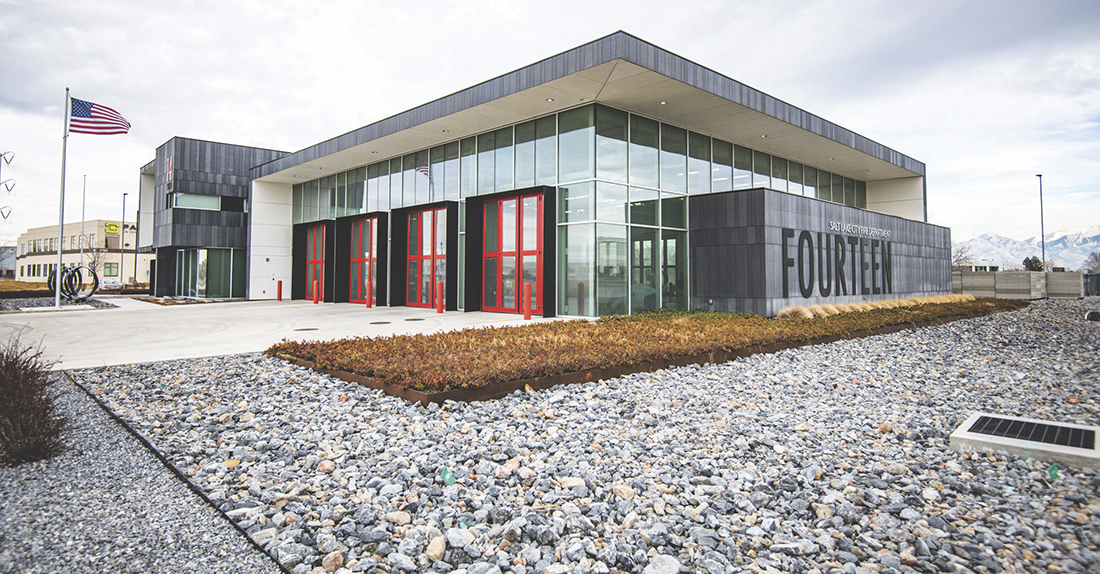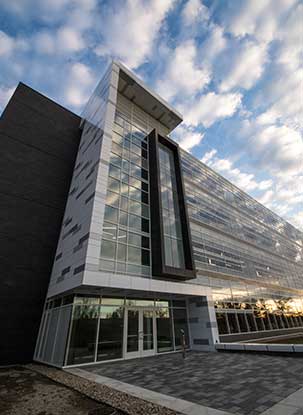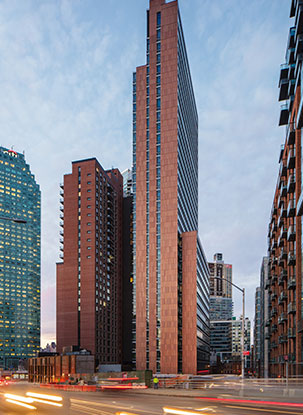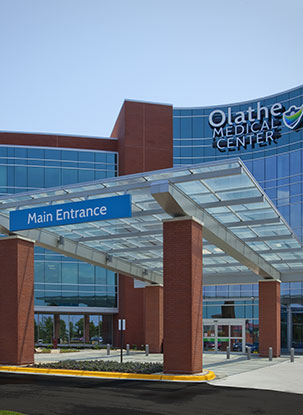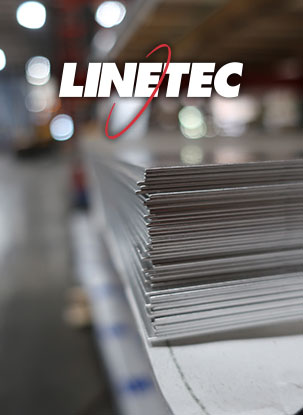
What threatens buildings on a microscopic level?
Microbes (or microorganisms) are living cells that are only visible once they have multiplied to the millions. Types of microorganisms include bacteria, algae, fungi and mold. Once microbes have multiplied to a large enough number on a surface, they may begin to cause stains, odors and even deterioration of the metal surface.
Unfortunately, by the time you can see an area of microbe build up, the damage is already underway, so prevention is the best form of protection.
 What areas are the most vulnerable?
What areas are the most vulnerable?Microbes are prevalent in high-traffic areas. Anti-microbial protection may be a smart choice if your project is an office building, hotel, school, retail center, senior living facility, apartment, hospital or clinic.
Antimicrobial finishes can protect high-touch surfaces of metal products, such as doors, windows, curtainwalls, entrances, panels and column covers. The treated finish discourages microorganism build-up, while protecting the metal product beneath from damage and deterioration. This treatment is not meant to replace regular cleaning practices. When standard maintenance is combined with a resistant finish, microbe build-up and damage will be one less worry.
How can a finish stop microbes from causing odors, stains and even deterioration to metal?
Mitigating an invisible, destructive threat requires solutions on a chemical level. Antimicrobial protection begins with the composition of the finish itself. Starting with a 70% PVDF-resin based fluoropolymer coating, an ion exchange mechanism is infused into the coating’s chemistry. This small adjustment allows the finish to protect itself when the conditions are right for microbe build-up.
The most prevalent microbial threats to surfaces – bacteria and mold – need moisture to flourish. The ion exchange mechanism in the antimicrobial finish is activated by the presence of moisture, causing it to release silver cations. The silver disrupts microbes’ metabolism and reproduction. If a microorganism can no longer eat or reproduce, it cannot grow or damage the architectural metal products.
This protection can be added to PVDF-based finishes that meet AAMA 2605 requirements. The protection still allows you to select nearly any color option. Standard and custom colors, mica and metallic coatings are available with antimicrobial protection.
For personalized assistance in selecting and specifying the right coating for your aluminum building products, please contact Linetec’s regional sales managers , email sales@linetec.com or call 888-717-1472.
Whitepaper: Antimicrobial Protection for Public Building Applications
